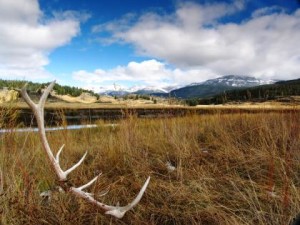We have much more to do and your continued support is needed now more than ever.
Smart Renewable Energy on Public Lands
Guest post by Hayley Connolly-Newman
Earlier this month, the EPA issued guidelines which would reduce coal generated power in each state by 6 percent over the next 15 years. This would give states the opportunity to reduce carbon emission amounts by choosing from other types of energy such as natural gas or renewable resources to improve their energy efficiency. In Montana, wind energy is set to play a role in achieving these new standards. Wind energy production has steadily grown in Montana over the last decade. A recently published economic report says Montana will support roughly 4,000 renewable energy jobs in the next 20 years.

The Public Land Renewable Energy Development Act does just that. Introduced by Sen. Jon Tester, with support from Senator Walsh and Representative Daines, along with most of the western delegation, the bill streamlines wind and solar permitting on public lands. The bill also creates a revenue share that is distributed between the state, county, and conservation projects in the region. As an organizer, I’m often asked what this means on the ground. What kind of restoration projects would get funded? How would it affect the surrounding region?


Renewable energy on public land will not only help Montana reduce carbon emissions, but restore and maintain public lands, create jobs, and ensure our energy security into the future.
Take Action!
Please urge your delegation to move this important piece of legislation forward towards a hearing. Call the Capitol Switchboard at (202) 224-3121 and ask for your Senator’s office. Ask to speak to the member of the staff who works on environmental, agricultural or appropriations issues. Tell them you would like to see the Public Lands Renewable Development Act get the hearing it deserves!
About the Author
 Hayley was recently hired by National Wildlife Federation to help organize smart development of renewable energy on public lands in Montana. She received her M.S. from University of Montana focusing on road ecology and wildlife habitat corridors. In her spare time she can usually be found outside, whether it be exploring the mountains on horseback or perfecting her cast on one of Montana’s many scenic rivers.
Hayley was recently hired by National Wildlife Federation to help organize smart development of renewable energy on public lands in Montana. She received her M.S. from University of Montana focusing on road ecology and wildlife habitat corridors. In her spare time she can usually be found outside, whether it be exploring the mountains on horseback or perfecting her cast on one of Montana’s many scenic rivers.






















